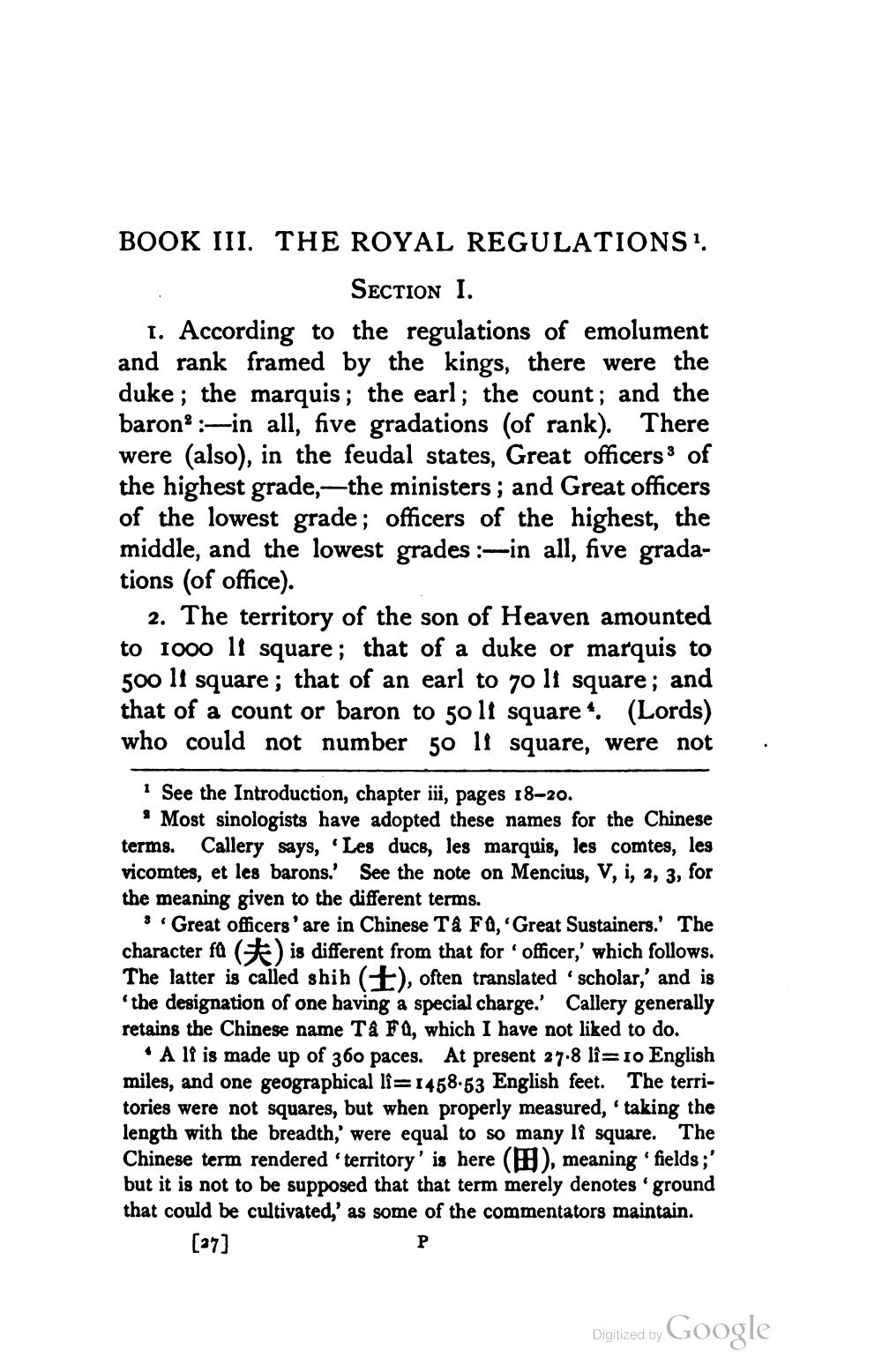________________
BOOK III. THE ROYAL REGULATIONS".
SECTION I. 1. According to the regulations of emolument and rank framed by the kings, there were the duke; the marquis; the earl; the count; and the baron? :-in all, five gradations (of rank). There were (also), in the feudal states, Great officers of the highest grade,—the ministers; and Great officers of the lowest grade; officers of the highest, the middle, and the lowest grades :-in all, five gradations (of office)
2. The territory of the son of Heaven amounted to 1000 11 square; that of a duke or marquis to 500 lt square; that of an earl to 70 11 square; and that of a count or baron to 50 11 square *. (Lords) who could not number 50 11 square, were not
See the Introduction, chapter iïi, pages 18–20. * Most sinologists have adopted these names for the Chinese terms. Callery says, 'Les ducs, les marquis, les comtes, les vicomtes, et les barons.' See the note on Mencius, V, i, 2, 3, for the meaning given to the different terms.
3. Great officers are in Chinese Tå FQ, Great Sustainers.' The character fa ( ) is different from that for officer,' which follows. The latter is called shih (+), often translated scholar,' and is
the designation of one having a special charge.' Callery generally retains the Chinese name Ta Fa, which I have not liked to do.
• A li is made up of 360 paces. At present 278 li=10 English miles, and one geographical lî=1458.53 English feet. The territories were not squares, but when properly measured, 'taking the length with the breadth,' were equal to so many li square. The Chinese term rendered 'territory' is here (!?), meaning fields;" but it is not to be supposed that that term merely denotes 'ground that could be cultivated,' as some of the commentators maintain.
[07]
Digitized by Google




